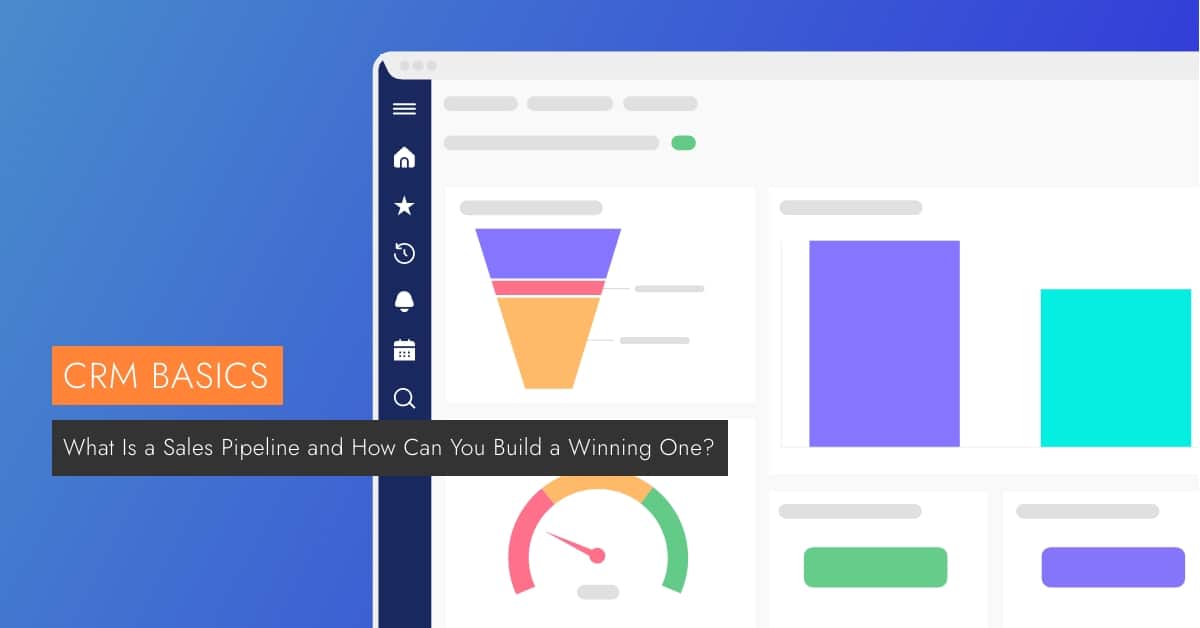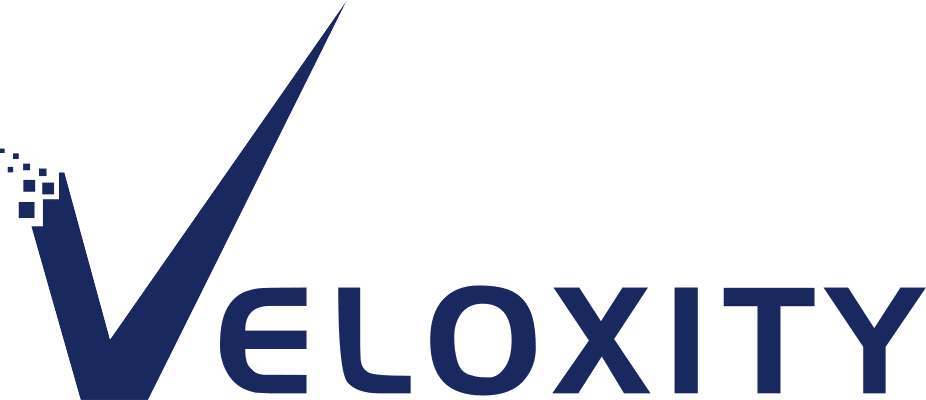What Is a Sales Pipeline and How Can You Build a Winning One?

Clinching sales deals is the climax of your sales and marketing efforts that begins with building a lasting relationship with leads flowing into your business.
But why do sales teams fail to hit their goals if businesses run following a robust and thought-out sales process? The answer is that lack of clarity into the sales pipeline causes setbacks in the sales process, and the team cannot turn outbound leads into repeat buyers with ease – you need a strong sales pipeline that always packs piping hot deals!
But what is a sales pipeline, and how can you build and grow one? We have unpacked everything you need to know about a high-converting sales pipeline in this precise guideline.
What is a Sales Pipeline?
A sales pipeline is a visual representation of your sales opportunities, defining their positions in the sales process as they advance through the sales stages. So your sales representatives can better track your prospective clients as they are pushed from opps to warm leads.
These stages are unique for each company and are designed by keeping the sales process that the business follows to fit in the consumer decision process into consideration.
Importance of a Sales Pipeline
Building and following a pipeline will help you:
- Effortlessly track all your opps that flow into your system daily
- Sell even more and systematically.
- Augment revenue forecast.
- Run business based on an integrated and thought-out marketing strategy.
In short, you can drive more profit and bolster productivity.
Difference Between Sales Pipeline and Sales Funnel
Though these terms are often used interchangeably, they are not identical. The primary difference between them lies in the data analyzed in each case and how it is represented.
Let’s look into the difference:
- As we have already stated, a sales pipeline deals with various stages throughout the consumer lifecycle – from acquiring leads to closing sales.
- On the flip side, a sales funnel indicates the conversion rates and the acquired lead quantity between pipeline stages.
- While a pipeline analysis describes the sales value and number and leads activity in real-time to enable the sales team to effortlessly channelize their efforts for higher conversions, a funnel report shows the win rate and is created depending on a cohort. For instance, if you acquired 200 leads in the last quarter, you can, with a funnel report, comprehend what portion of the acquired leads has really advanced through the pipeline stages.
Sales Pipeline Stages
The sales stages of a B2B sales process:
- Lead Generation: Though handled by marketing reps usually, it is still an element of a B2B sales process. It is the technique of drawing opps and prospective clients to your company and making them feel curious about your products through nurturing – with the ultimate target of turning them into loyal clients. Salespeople can:
- Curate ICPs/ideal customer profiles by incorporating real-time marketing, investigating the closed sales, and figuring out the identical characteristics of the two companies doing a business.
- Collaborate with the marketing representatives to devise killer plans to brainstorm content ideas for effective content marketing and offer value-based input to drive more high-value prospects to your business.
- Lead Qualification: It is a vital stage that entails independent analysis or communicating with the captured leads and scoring them to pinpoint the prospects that are more likely to close and worth pursuing further.
- Contacting: A sales representative, for the first time, interacts with the qualified leads via the communication channels that each customer prefers – social media, direct calls, SMS, email, etc. Thus your sales team can, more efficiently, map your business specifications with your consumers’ demands/requirements. Scheduling a demo on how your business can better meet your client’s unique needs or convincing the lead for a meeting can help progress faster towards deal negotiation.
- Proposal: Once you’re done with lead qualification, it’s time to make up and send an official sales proposal clearly defining the price and terms and conditions. A highly-effective customer-centric proposal is always customized based on buyer demands.
- Negotiating and Closing: Now, it’s time to negotiate a bit with your to-be consumers on the terms and conditions, costs, etc., and let them decide. If your products/service can impress your prospective clients, they will agree to buy from you, and you can log your win.
- Retention: You are not yet done with closing each deal. You have to follow up with your buyers periodically to build a lasting relationship and grow your business with the existing customer base.
How to Build an Effective Sales Pipeline
Devising a sustainable sales pipeline helps your sales team boost your top and bottom line revenue with fewer efforts and time.
Let dive deeper into how you can build a sales pipeline from scratch:
Create a Buyer Persona
A buyer persona gives you a fictional manifestation of your target buyers or ideal client. With clarity into the audience you should reach and market to, it becomes effortless for your sales team to devise compelling, hyper-targeted content that speaks to your client’s issues and demands.
Define the Stages in Your Sales Cycle
It’s time to frame the sales stages around your sales cycle – the phases your sales team follows to win a deal.
As we have already stated, these stages may be unique for each business model and need tweakings to fit in your distinct sales scenarios and make the pipeline operate more efficiently.
Estimate the Number of Opps Needed to Hit the Target
The set of stages in your sales process must indicate the number of sales opps and leads your teams must acquire to hit their set target. For example, say, from your pipeline analysis, you got to understand that your conversion rate is 5% from the leads your representatives interact with and 75% from the high-value prospects they sent a targeted proposal to. However, your sales team devotes only 10% of their operating hours to follow up with prospects and 30% on leads.
Such insights help your salespeople route their efforts in the right direction for higher conversion rates and add more value to your organization.
Build a New Sales Pipeline or Modify the Existing One
Your business evolves with time, so does your sales pipeline – it’s morphing over time, and you can hardly nail it on the first shot. Even if you already have implemented one, you have to tune it up based on the tasks your team executes throughout the sales cycle as your company scales.
Build a Strong Customer Database
A powerful customer database is gold dust to any business that helps boost sales. You have a whole array of organic ways to reach your target audience and grow your customer database – for instance, web forms, emails, cold calling, CTA, sending out mailshots, networking via social media, etc.
It’s crucial to enable your sales representatives to have a unified view of your customers and get it at their fingertips – recording your client database in a CRM’s centralized repository is always a plus.
Plan Your Calls and Fine-tune Your Pitch
Onboarding expert communicators is always a plus. However, there are ample opportunities to upskill staff members and fine-tune pitching so you can efficiently figure out the possibilities to create more value for your clients, demonstrate it effectively and incite them to buy.
Key Sales Pipeline Metrics to Look Into
Track the following metrics to evaluate the health of your sales pipeline:
- Qualified lead number in the pipeline.
- Average deal size
- The close-ratio
- Customer acquisition cost/CAC
- Sales cycle velocity – the time a sales representative requires to close a sale.
How Can Veloxity CRM Help Better Manage Your Sales Pipeline?
Gone are the days of stagnant pipelines and unlimited drill down to optimize your sales process. Thanks to Veloxity’s state-of-the-art CRM that can bring a static sales pipeline to life. Let’s see how:
- Use Veloxity CRM’s pre-set pipeline options to create a winning pipeline. Plus, Veloxity lets you configure your own pipeline stages so that they can make the most sense for your business model.
- Create numerous pipelines for multiple sales processes with a few clicks only
- Get a close view of your opps and predicted revenue with out-of-the-box charts and Kanban view.
- Drag and drop opps between stages in the kanban view.
- Track essential customer interactions right from the pipeline timeline
- Schedule and record web meetings and direct calls
- Visualize your pipeline at various levels in the territory structure or direct sales pipeline reporting
